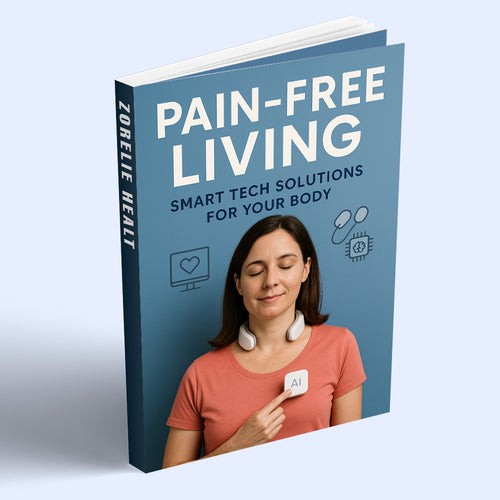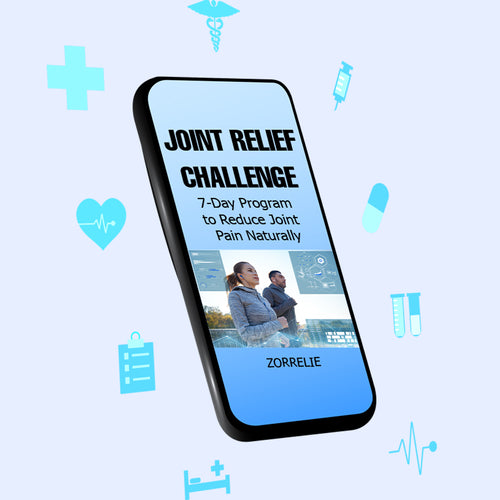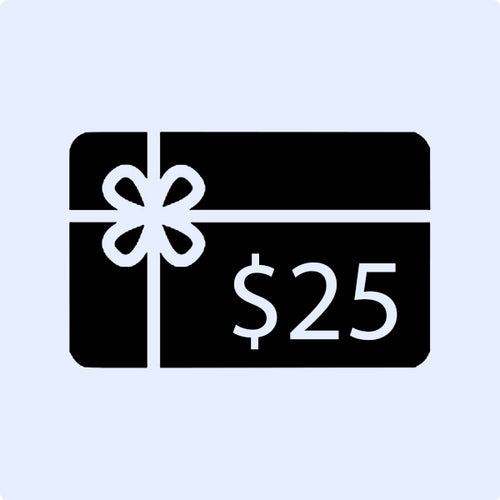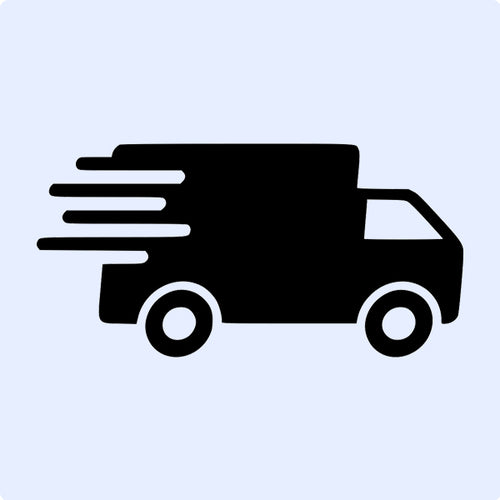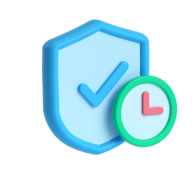You just crushed your gym session — legs, back, arms, core — giving it everything. But come the next morning? Sore muscles. Stiff joints. You’re questioning: “Did I overdo it? Will my body bounce back?”
Here's the truth: recovery is as vital as the workout itself. Without proper recovery, you risk fatigue, injury, plateauing, or burnout. In this in-depth guide, I—Dr. Jonathan Miles, DPT, PhD, Orthopedic Rehabilitation Specialist—will walk you through the science-backed strategies to help your body repair, adapt, and improve. Whether you’re a weekend warrior, serious athlete, or just someone chasing wellness, your recovery matters.
We’ll cover:
-
The physiology behind muscle recovery
-
The difference between active recovery vs rest
-
Techniques: massage, heat therapy, stretching, etc.
-
Nutrition & sleep strategies
-
How to reduce DOMS (Delayed Onset Muscle Soreness)
-
Smart wellness tools (including those you can shop at Zorelie.co)
Let’s treat sore muscles like a pro—no more suffering in silence.
1. The Physiology of Muscle Recovery
To treat soreness effectively, it's crucial to understand what happens inside your body after an intense workout.
1.1 Microtrauma & Inflammation
-
During heavy lifting or eccentric motions, tiny micro-tears form in muscle fibers. These are normal and part of adaptation.
-
The body triggers an inflammatory response to clean up debris, bring in nutrients, and start repair.
-
Inflammation is a double-edged sword: it’s essential, but overactive inflammation can delay recovery.
1.2 The Phases of Recovery
Often, recovery is conceptualized in phases:
-
Immediate recovery (0–24 hours): removal of metabolic byproducts (e.g., lactic acid), increased blood flow, initiating repair.
-
Inflammatory & repair phase (24–72 hours): the body works on rebuilding, reducing inflammation, remodeling tissue.
-
Adaptive & remodeling phase (3–7+ days): muscle fibers adapt, grow stronger, new mitochondria, improved capacity.
These phases overlap and vary based on individual fitness, workout intensity, and recovery practices. Australian Sports Physiotherapy+2Healthline+2
1.3 Delayed Onset Muscle Soreness (DOMS)
One of the most common complaints is DOMS — muscle soreness that peaks 24–72 hours post-workout. Wikipedia
-
DOMS is strongly linked to eccentric contractions & unfamiliar movements.
-
It's not necessarily an indicator of a “good workout.”
-
Your aim: reduce DOMS intensity and duration, not chase pain.
2. Active Recovery vs. Rest: Which One Wins?
A common debate: should you rest completely (passive recovery) or engage in active recovery? Research gives a nuanced answer.
2.1 What is Active Recovery?
Active recovery includes light movements or low-intensity exercise (walking, light cycling, swimming) on your rest days to stimulate circulation, promote nutrient delivery, and help clear waste products. UC Health+3Mass General Brigham+3Frontiers+3
2.2 Evidence: Is Active Recovery Better?
-
Meta-analyses show active recovery leads to lower DOMS and perceived fatigue compared to complete rest. PubMed+2Frontiers+2
-
Active movement helps accelerate lactate removal and improve local circulation. Frontiers+1
-
But extreme or intense “active rest” can backfire — it has to remain low intensity.
So: active recovery > total rest in many cases — but only when properly dosed.
3. Proven Recovery Techniques
Here we dive into modalities you can incorporate to optimize muscle recovery.
3.1 Massage & Myofascial Release
One of the strongest evidence-backed tools for recovery. Meta-analyses find massage the most effective technique to reduce DOMS and perceived fatigue. PubMed+2SpringerOpen+2
-
Mechanisms: increases blood flow, reduces swelling, breaks fascial adhesions, modulates inflammation.
-
Techniques: manual massage, foam rolling, percussion devices (massage guns).
-
For example, using a quality massage gun for 10–15 minutes per muscle group can significantly relieve tension.
Tip: Don’t press hard on already inflamed areas—start light and gradually increase pressure.
(At Zorelie.co, you might offer something like a percussion massage device — customers can click product links directly from article.)
3.2 Heat Therapy (Thermotherapy)
Applying heat is effective for reducing muscle stiffness, improving tissue extensibility, and promoting blood flow. Wikipedia+2Heart and Health Medical+2
-
Types: heating pads, warm compresses, infrared wraps.
-
Best used after the acute inflammatory phase (i.e. 24+ hours post-exercise), or on chronic tension zones.
-
Helps relax muscles, reduce spasms, support tissue repair.
If your store sells heating pads or infrared wrap devices, this is a perfect place to link them.
3.3 Contrast Therapy / Cold Immersion
-
Cold exposure (ice baths, cold water immersion) aims to blunt inflammation and reduce pain. Wikipedia+3PMC+3SpringerOpen+3
-
Contrast therapy alternates hot & cold immersion.
-
Caveat: Some studies suggest cold immediately after strength training might reduce muscle adaptation/growth. Wikipedia
-
Use cautiously, not every recovery session.
3.4 Stretching & Mobility Work
Gentle static stretching enhances blood flow and flexibility — good during the repair phase. Harvard Health+2Australian Sports Physiotherapy+2
Other mobility drills (dynamic stretching, controlled ranges) can maintain joint health.
3.5 Compression & E-stim (NMES)
-
Compression garments help reduce swelling, improve venous return. SpringerOpen+1
-
Neuromuscular electrical stimulation (NMES) offers mild involuntary contraction to aid blood flow; mixed evidence. Frontiers+1
These are optional supplementary tools, not primary pillars.
4. Nutrition & Hydration for Recovery
Your recovery is only as strong as your nutritional foundation.
4.1 Protein & Amino Acids
Muscle repair demands building blocks. Consuming 20–40 g of quality protein within 30–60 minutes post-exercise is ideal. Heart and Health Medical+2PMC+2
Focus on complete proteins: whey, eggs, lean meats, tofu, legumes.
4.2 Carbohydrates & Glycogen Replenishment
After intense effort, your glycogen stores are depleted. Pair carbs with your protein (e.g., rice + chicken, oatmeal + protein shake) to restore energy and help protein uptake.
4.3 Fats, Micronutrients & Anti-Inflammatory Foods
-
Omega-3s, antioxidants, magnesium, vitamin D can support repair and manage inflammation.
-
Berries, leafy greens, nuts, fatty fish — include them.
4.4 Hydration & Electrolytes
Proper hydration ensures cellular function, nutrient transport, and helps prevent cramping. Add electrolytes (sodium, potassium, magnesium) especially if sweating heavily. Heart and Health Medical+1
5. The Role of Sleep & Circadian Rhythm
Recovery doesn’t occur only in the gym — it largely happens while you sleep.
-
During deep sleep, your body releases growth hormone, which plays a critical role in muscle repair and regeneration. Health+1
-
Aim for 7–9 hours each night; athletes/training individuals may need more.
-
Tips: maintain consistent sleep schedule, avoid blue light before bed, optimize room conditions (dark, cool, quiet).
Quality sleep enhances recovery, reduces stress hormones, and supports overall adaptation.
6. How to Design a Recovery Routine (Weekly Template)
Here’s a sample weekly layout combining training & recovery strategies:
| Day | Activity | Recovery Focus |
|---|---|---|
| Mon | Strength / resistance training | Post-workout massage, protein + carbs, stretching |
| Tue | Light cardio / active recovery | Mobility work, heat therapy |
| Wed | HIIT / explosive training | Contrast therapy / massage |
| Thu | Moderate strength | Compression / light stretching |
| Fri | Cardio / endurance | Hydration, cold immersion, massage |
| Sat | Full rest or yoga | Gentle stretching, heat, sleep optimization |
| Sun | Active recovery (walk, swim) | Light massage, nutrition focus |
Adjust based on your training split and personal recovery rate.
7. Practical Tips to Reduce Muscle Soreness (DOMS)
-
Gradually ramp intensity (don’t jump into heavy loads).
-
Warm up & cool down properly.
-
Rotate muscle groups to allow rest.
-
Use massage or foam rolling early, but gently.
-
Prioritize sleep, nutrition, hydration.
-
Use heat therapy after acute phase.
-
Listen to your body — avoid pushing through sharp pain.
8. Smart Wellness Tools & How Zorelie.co Fits In
To make recovery tangible, you need the right tools. At Zorelie.co, the curated collection focuses on evidence-backed recovery devices that complement what science teaches. Here’s how:
-
Percussion Massage Guns — ideal for muscle relief, breaking tension, improving circulation. (E.g., if Zorelie has a Deep Tissue Massage Gun, link it here)
-
Heating Pads / Infrared Wraps — for thermotherapy sessions after inflammation has settled.
-
Compression Wraps or Sleeves — supporting blood flow and managing swelling.
-
Recovery Accessories — foam rollers, massage balls, etc.
For readers: click product names to navigate to purchase directly. E.g.: Zorelie Deep Muscle Massage Gun (link) or Zorelie Infrared Heating Wrap (link).
By offering educational content + direct product links, Zorelie positions itself not just as a store, but a trusted wellness partner.
9. Real User Story / Case Study (Narrative)
Let me share a scenario:
“When I first started lifting high volume, my quads would ache for days,” says Mark, a 28-year-old tech consultant.
After applying a structured recovery protocol—20 minutes of massage gun usage, nighttime heat wrap, protein + carb meal, and prioritizing sleep—Mark’s soreness dropped from 7/10 to 2–3/10 in just a week. Over two months, his performance improved, recovery was faster, and he avoided injuries.
These are real results when you treat recovery seriously.
10. Frequently Asked Questions (FAQ)
Q: Can I use massage immediately after intense training?
A: Use gentle strokes initially; avoid aggressive deep percussion in already stressed tissue. Wait ~6–12 hours for more intense use.
Q: Should I always do active recovery?
A: Yes, in most cases. But don’t overdo it—stick to low intensity. On extreme fatigue days, passive rest may be warranted.
Q: Does cold therapy damage muscle growth?
A: The timing is key. Immediately post-strength sessions, cold may blunt some adaptation—so reserve cold for cardio days or non-hypertrophy sessions.
Q: How long until DOMS resolves?
A: Usually 2–3 days. If soreness persists >72 hours or worsens, it may indicate injury or overtraining.
Q: Which recovery tool should I invest in first?
A: A quality massage/percussion device plus a heating pad are excellent starting points for ROI in recovery.
Conclusion: Recovery Is Your Secret Weapon
Recovery isn’t optional. It’s foundational. Whether your goal is strength, aesthetics, longevity, or general wellness, your training yields dividends only if your body recovers well.
Here’s your action plan:
-
Map out your weekly recovery routine (active, massage, heat, nutrition, sleep).
-
Prioritize sleep & nutrition — they form the base.
-
Integrate massage / heat therapy tools, leveraging recommended devices from Zorelie.co.
-
Track your soreness, performance, and adjust.
-
Stay consistent — recovery compounds benefits over months, not days.
Let Zorelie.co be your companion in this journey. Through smart wellness tools + educational content, we aim to empower you to recover like a pro, train harder, live better.
— Dr. Jonathan Miles, DPT, PhD


